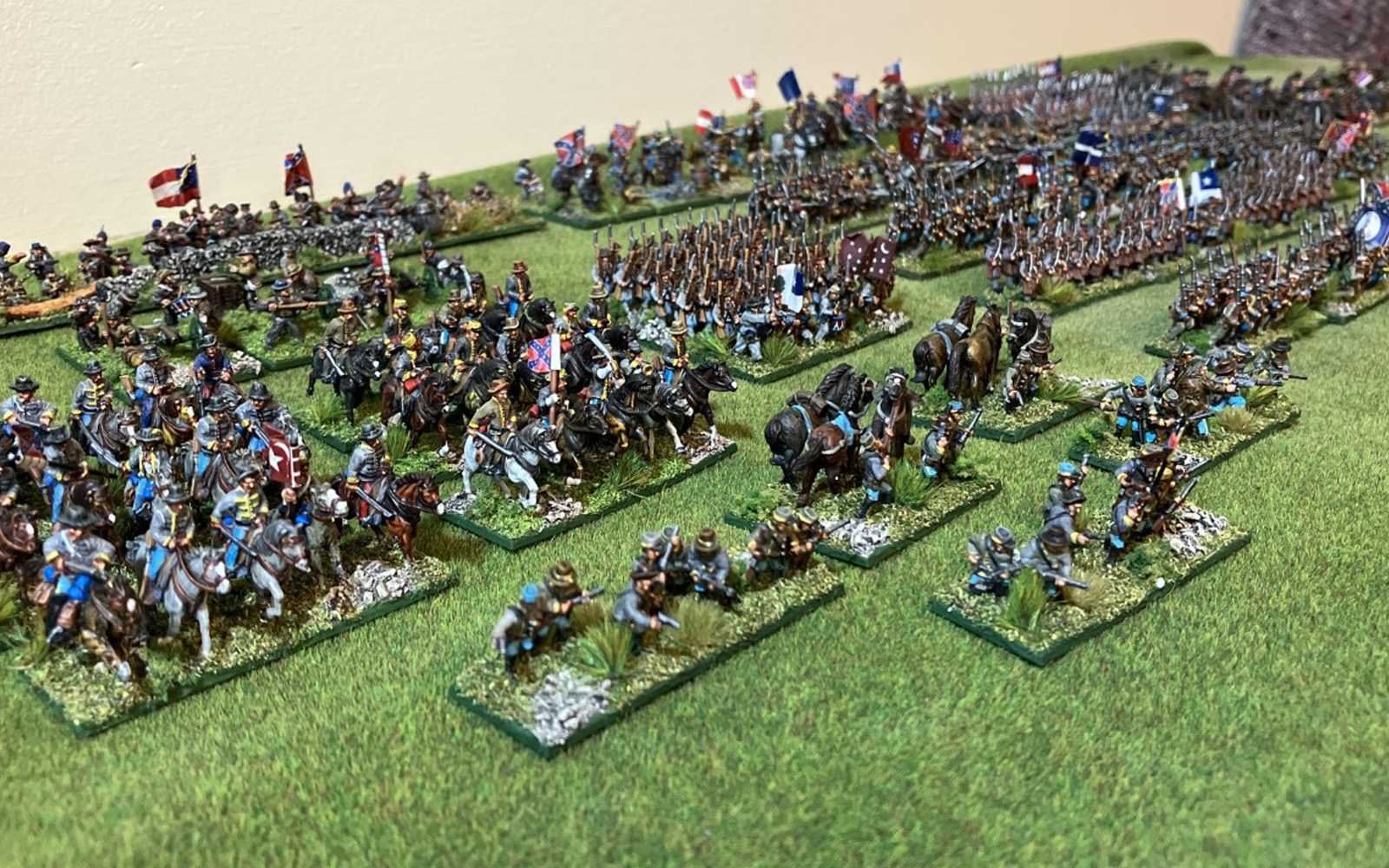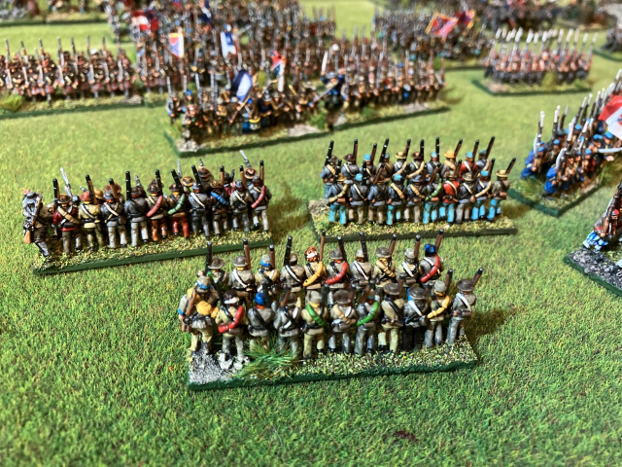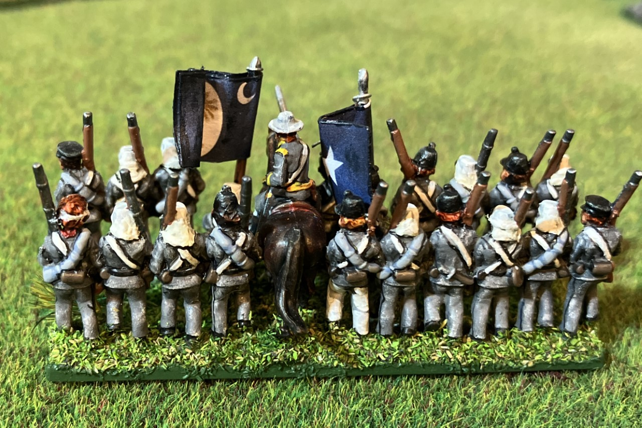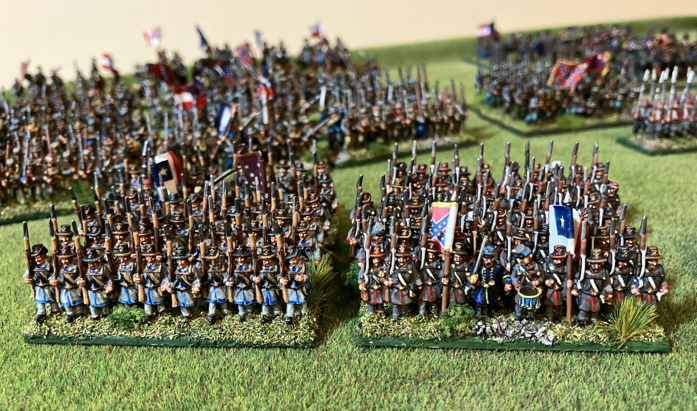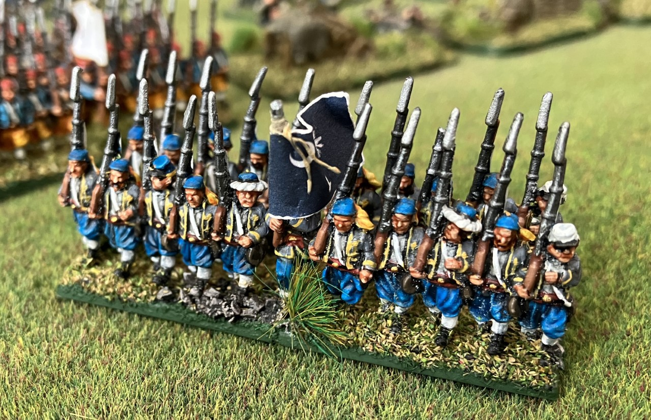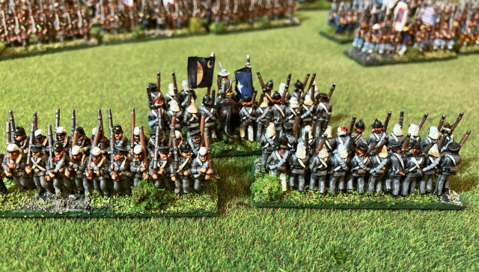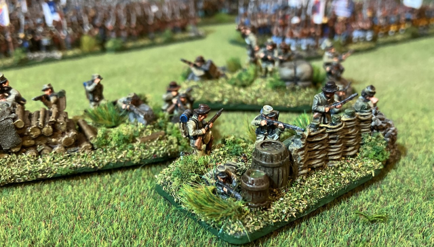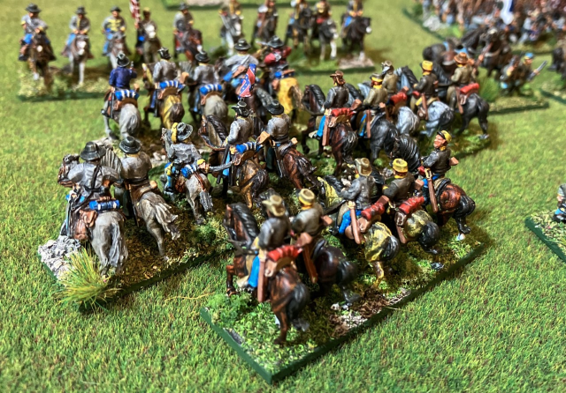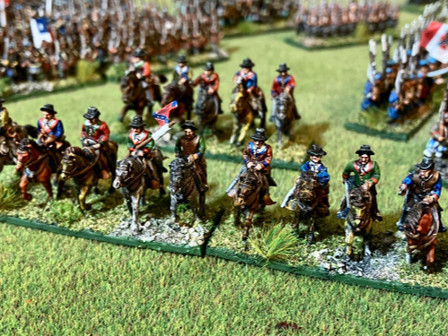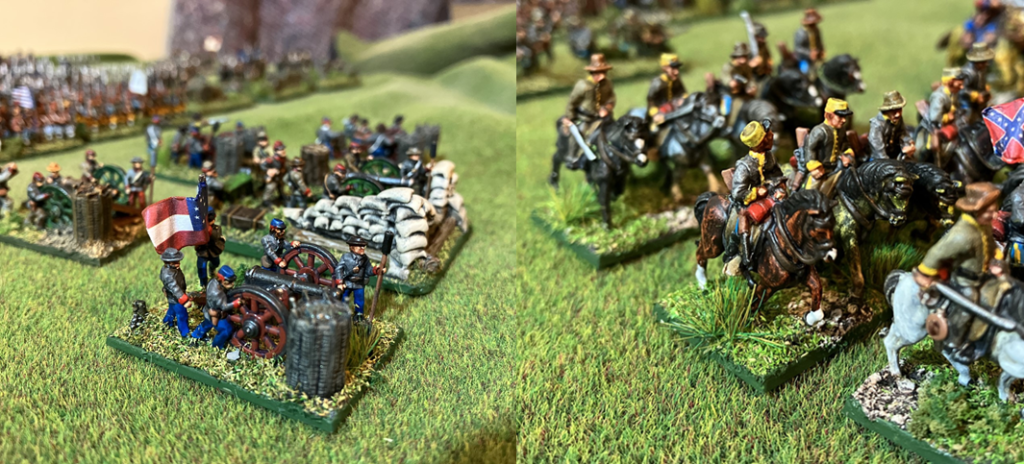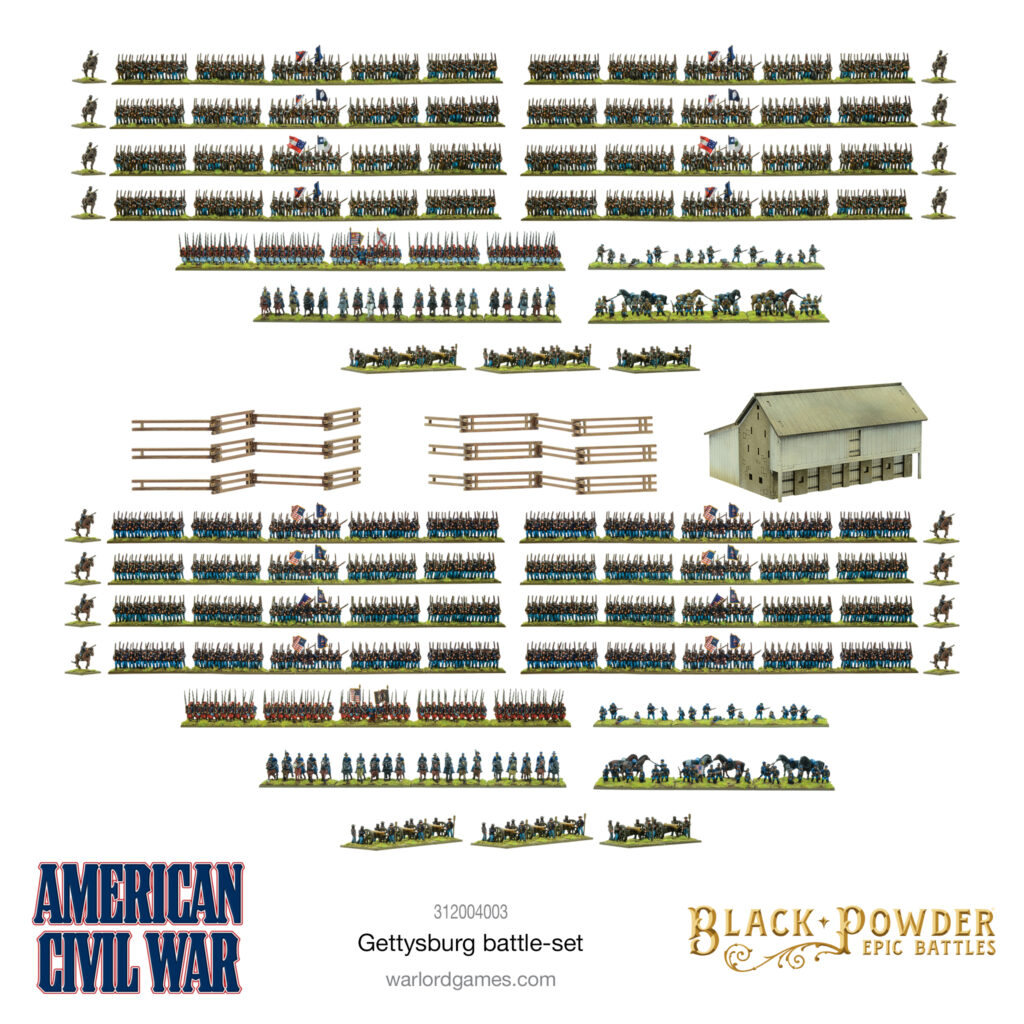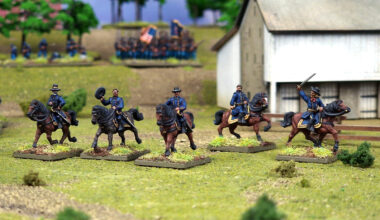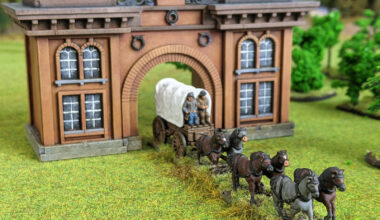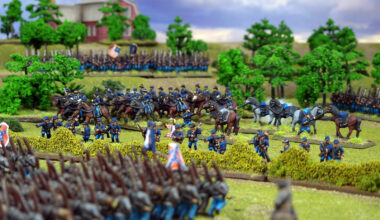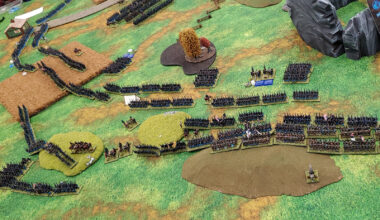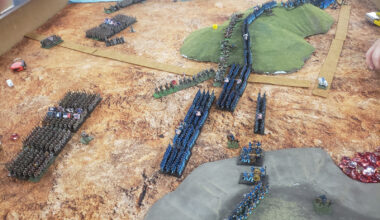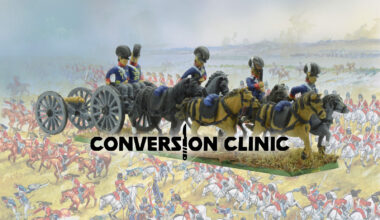Rhys Pogson Hughes Emanuel is a prolific and extremely active member of the Black Powder Epic Battles community. Some of you may recognise him from the lively Epic Battles Facebook movement where he has been supporting the game across the Epic Warlords, Warlords Epic Battles ACW, Epic Battles Warlord Games, Warlord Games Epic Battles Napoleonic and Warlord Games Black Powder Epic Battles groups. Be sure to check out these groups and join the conversation.
For the first part of this series, Forming the Federals, in which Rhys showcases the Union side of his American Civil War collection, click here »
Rhys: For the second article of this series, I thought it best to follow the Union with their opposite numbers, the forces of the southern Confederacy. I once again sought to achieve a highly personalised look from this force through conversions and painting solutions, again demonstrating the flexibility of the Epic Battles figures.
As with the Union, I committed to doing some research before I put glue to model or paint to brush. Unlike the more uniformly attired Federals, I found there was plenty of opportunity to add (historically based) variety. The many Osprey Publishing titles on the period, Brassey’s History of Uniforms series, and Battle Cry of Freedom by James McPherson provided plenty of inspiration. From my reading, my key takeaway was that although we think of Confederates looking ragged and mismatched, the differing grey and butternut (referring to the warm brown colour as derived from dyes of the tree of the same name) uniforms would more likely be between units and not within them. Thus, I decided that most of my rebels would retain a uniform look, but that uniformity would not match between units, but within them. Once I developed the mental image of the force I wanted, I sat down and designed my Order of Battle (OOB), which would reflect the traditionally associated variety of grey and butternut cloth, but not strictly to the commonly held trope of mixed uniform within individual battalions.
To match their Union opposition, I used a three-base battalion as my core unit structure. I also wanted to maintain that unique ‘Epic’ look and used the character of each historical unit to create individuality rather than the figures themselves. Therefore, in a similar vein to the Union, I selected a broad spectrum of Confederate forces, representative of regular, volunteer, state, and militia units. To achieve my desired effect, I created units broadly representative of cohesive historical battalions and regiments, with each formation given a unifying trait or bespoke conversion.
I started with those units that I was representing with a more uniform or traditional finish. These made up the bulk of my butternuts and greys – these colours would naturally distinguish themselves from each other. Within their overarching hues, however, I used some simple painting techniques to give each unit a more distinct look. Heads and headdresses are often the first things we see on a model, so I concentrated on these areas of the miniatures. I changed where I put a blue band on different units’ kepis to create obvious points of difference, and swapped or converted heads (so some units had all kepis or all slouch hats), for another easy win. Doing this I ended up with Texans, Virginians, and Georgians to name but a few – these had probably the most eclectic mix of uniforms.
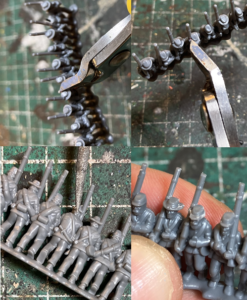
If you don’t fancy swapping heads, creating all kepi units by snipping the sides and front of the slouch hats down works well and is a reasonably simple process (see image to the right). With a little modelling putty, you can easily add havelocks (cloth flaps to shade the back of the neck) as well.
Across many of the units, to help add more variety and individual character I added more complex conversion techniques. My favourite three techniques with the confederates were head swaps, adding Senior NCOs and changing the command. I covered the first two techniques in my last article. For changing the command, I simply snipped out the foot officer and one infantryman from one end of the command strip front rank, creating a two-man gap, into which I added the mounted officer, to give the stand a very different look.
With only a little research you quickly realise that complex conversions certainly aren’t required to create variety in a force like the Confederacy within the Epic Battles scale. Below are my South Carolina and Mississippi Rifles conversions, made from the Iron Brigade figures. These are created by nothing more than changing the paint scheme to match the similarly styled units.
A similar technique was used for my Confederate zouaves. Why reinvent the wheel after all? I used the exact same system as I did for the Union but widened my scope. For these, I wanted each stand to be ‘standalone’, so I could group them into zouave battalions or attach them as individual companies to other battalions to make ‘Large’ four-base Black Powder Units. This method allowed me to represent six different units: Louisiana Tigers, Zouave Cadets, and the Inkerman, Hampton, Thomasville, and Maryland Zouaves.
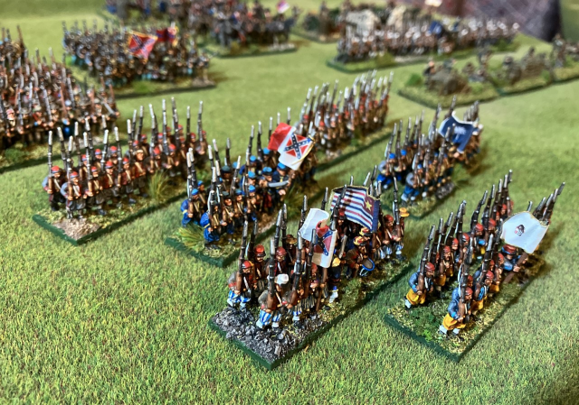

I did get carried away, exchanging a few heads and getting a bit liberal with green stuff in order to represent turbans, kepis, straw hats and havelocks that were also commonly worn.
One of my favourite Confederate conversions was the Citadel Cadets. This was easily achieved with a simple paint scheme, but a few choice substitutions and head swaps to match those worn in the college finished the look. I also converted all the kepi heads, using green stuff on the rear to create a havelock.
For my skirmishers, I went for a combination of regulars and sharpshooters. The figures were so good that no conversions were really needed, but I make the bases more scenic to make them stand out a little.
For the Confederate cavalry (I had a lot of fun painting these!), I wanted four distinct units – three mounted and one dismounted – this made creating variety easier. Two of the mounted units I distinguished by using a similar technique that worked with the foot. I gave one unit mostly kepis and the other mostly slouch caps – the rest of the uniform was the same except for the added roll mats which complete the look.
To differentiate the other mounted unit, I created some Missouri Raiders – the clever simplicity of the sprues made this easy with nothing more than a particular paint scheme required.
For the dismounted cavalry, no clever changes were needed to make them stand out, but as these are my favourite figures in the range, so I couldn’t help adding one small conversion. What is cavalry without a squadron pennant? For this, I snipped away the rifle from either side of one of the hands. I then drilled through with a pin drill, inserted some 2mm garden wire, cut to length and added an appropriate standard.
For my artillery, I wanted to represent three separate batteries, with a mix of small calibre, smoothbore and rifled barrels between them. Other than indulging in my vice of turning artillery bases into small dioramas, I added more variety with one of the simplest and my most commonly used technique with Epic Battles miniatures – simply cut off the head, and reposition it on the same figure! This technique works equally well with infantry, cavalry and officers.
I needed six commander bases for my force. The Confederate commanders from the range are the best in my opinion and need no conversion. However, to help create a simple diorama feel to your Command stands without having to go too far, I recommend an old trick of cinema. Add one or two inanimate objects prominently on the stand. This makes the scene feel more natural (this technique can be found prominently in the movie Zulu, where you’ll find many such objects in the foreground).

One last tip – any proud banner should have ornamental cords and tassels (finials). To recreate this at the scale I use 0.3mm wire. It is flexible but holds its shape once painted unless it is really pushed. I tie it about the top of the flagpole, glue it in place at the knot and paint it gold or silver, as the last act of assembling my unit.
Can I get a Rebel Yell? I am very happy with how both sides of my ACW collection turned out. Although I have probably put more effort in than is strictly required to make them unique, I learned loads, improved both my painting and modelling ability, and matured my creative skills. Something that my Epic Waterloo units are most certainly benefitting from.
If you are looking for some further Southern variety, I would recommend looking up the varied Mississippi Infantry Regiments, Virginia or Sumter Guard, Gist Riflemen, Alabama Blues, and almost any of the small volunteer and Militia Units – all of which would be easy conversions from the Epic Battles sprues.
I truly hope you are inspired to try some experimentation of your own. As I said in the first article, I will be continuing this series with my Waterloo project conversions; where I have really tried to stretch the Epic range, using multiple combinations of simple techniques to represent a much wider range of units than even I had thought possible. With a little imagination and enough research, anything is possible! I am happy to discuss in detail anything I have presented, either in the comments below or in one of the many Epic FB groups (you’ll find links to these at the head of this article –ed.). Good luck with whatever you are working on.
by Rhys Pogson Hughes Emanuel
Inspired? Get started with the Gettysburg Battle-Set
This is the ultimate way to get started with Epic Battles, with two massive armies in colour-coded plastic (including brand new plastic zouaves, cavalry, dismounted cavalry & skirmishers) the aforementioned MDF scenery pieces and just about everything you need to get playing the American Civil War on the epic scale it deserves. The Gettysburg Battle-Set contains:
- Union army (blue plastic) – 8 infantry regiments, 1 zouave regiment, 1 cavalry regiment, 1 dismounted cavalry regiment, 1 skirmishers regiment, 8 cannon & 8 mounted commanders
- Confederate army (grey plastic) – 8 infantry regiments, 1 zouave regiment, 1 cavalry regiment, 1 dismounted cavalry regiment, 1 skirmishers regiment, 8 cannon & 8 mounted commanders
- Green plastic bases for all figures
- A5 Black Powder rulebook
- 36-page American Civil War background, scenario and supplemental rule booklet
- Flag sheets for both Union and Confederate forces
- Laser-cut MDF farm building
- Laser-cut MDF Snake fences
- Six D6 dice
